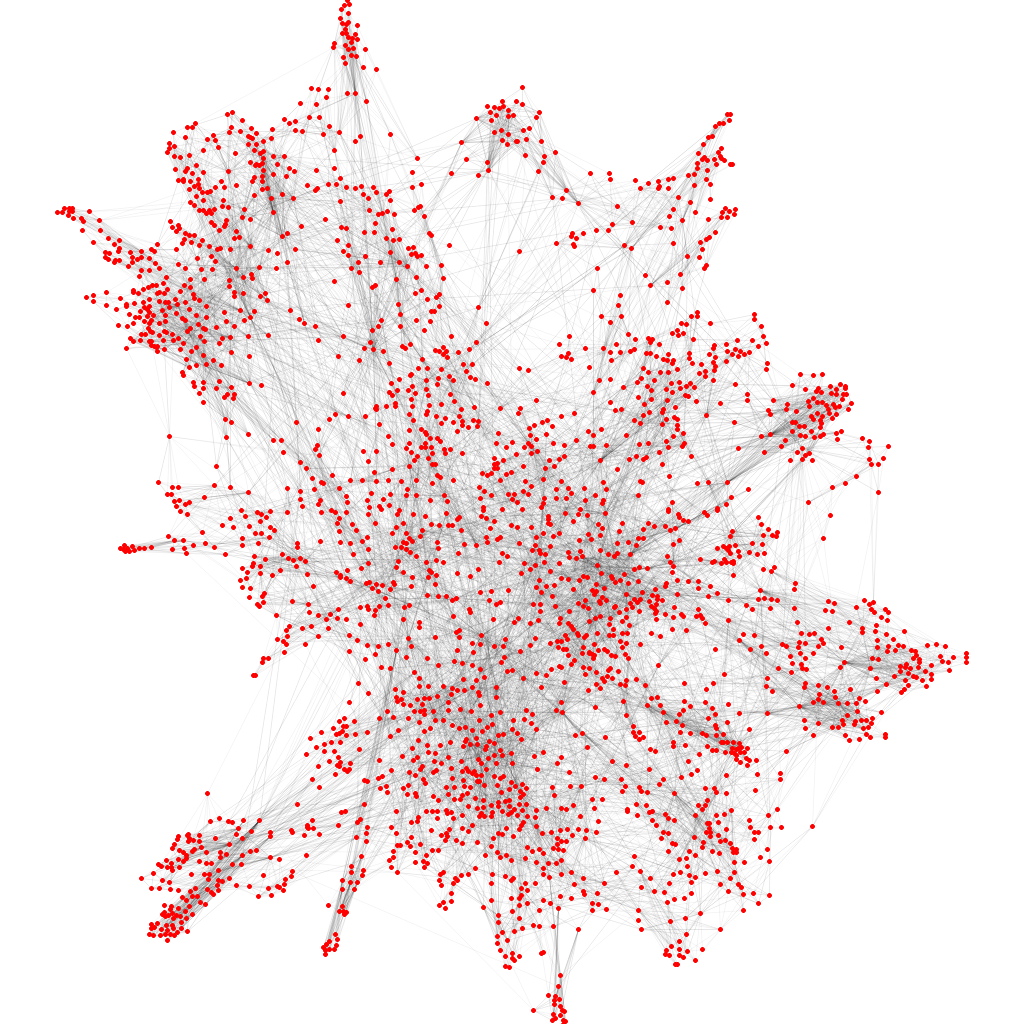
Very fast implementation of ForceAtlas2 – force-directed Continuous Graph Layout Algorithm for Handy Network Visualization (i.e. position the nodes of a n-dimension graph for drawing it more human-readably)

The implementations used depend on the type and the parameters. The most optimized is a Copy type with prevent_overlapping and barnes_hut disabled, in 2D or 3D. Some specializations are not implemented yet. x86 and x86_64 processors with support to avx2 use SIMD to compute faster on the f64 or f32, 2D, prevent_overlapping disabled and barnes_hut disabled case.
TL;DR If you want best performance, use the following:
* CPU: x86 or x86_64 with avx2
* Layout<f32> (Layout<f64> should be ~2 times slower)
* Settings::prevent_overlapping: None
* Settings::barnes_hut: false (or just don't use this feature)
* RUSTFLAGS='-C target-feature=+avx2'
Use the barnes_hut feature to turn repulsion from O(n^2) to O(n×log(n)) (only for 2D/3D and f64/f32). However, some optimizations like SIMD are not available with Barnes-Hut.
Parallelization is implemented for generic/2D/3D cases without SIMD and without other layout settings. It will be implemented for other cases in the future. The bigger is your graph, the more interesting is the parallel mode. Tune it with Settings::chunk_size. You can control the number of threads with rayon::ThreadPoolBuilder.
Install Rustup and switch to nightly:
rustup toolchain install nightly && rustup default nightly
A packet may be needed to draw graph:
sudo apt install libfreetype6-dev
Clone repository:
git clone https://framagit.org/ZettaScript/forceatlas2-rs && cd forceatlas2-rs
Build example: (examples/wot.csv file lists the edges of a directed graph, in two columns)
RUSTFLAGS='-C target-feature=+avx2' cargo build --release --example csv_import
./target/release/examples/csv_import examples/wot.csv
Output images are in target directory.
Python (forceatlas2, fa2) and JS (sigma.js) implementations are slow.
Java implementation (Gephi) does not use SIMD.
Julia implementation (Anim-Wotmap) beats them all and uses SIMD, but is still slower than this one.
If you know any faster comparable force-directed layout implementation, please let me know.
There is a binding for use in Python, fa2rs.
GNU AGPL v3, CopyLeft 2020-2021 Pascal Engélibert
Implementation details inspired by: * python-forceatlas2 (GNU GPL v3, CopyLeft 2016 Max Shinn) * python-fa2 (GNU GPL v3, CopyLeft 2017 Bhargav Chippada) * Gephi (GNU GPL v3 / CDDL 1.0, CopyLeft 2011 Gephi Consortium) * sigma.js, Graphology (MIT, Guillaume Plique) * Anim-Wotmap (Hugo Trentesaux)
The ForceAtlas2 paper was released under CC BY, Copyright 2014 Jacomy et al.
This program is free software: you can redistribute it and/or modify it under the terms of the GNU Affero General Public License as published by the Free Software Foundation, version 3 of the License.
This program is distributed in the hope that it will be useful, but WITHOUT ANY WARRANTY; without even the implied warranty of MERCHANTABILITY or FITNESS FOR A PARTICULAR PURPOSE. See the GNU Affero General Public License for more details.
You should have received a copy of the GNU Affero General Public License along with this program. If not, see https://www.gnu.org/licenses/.